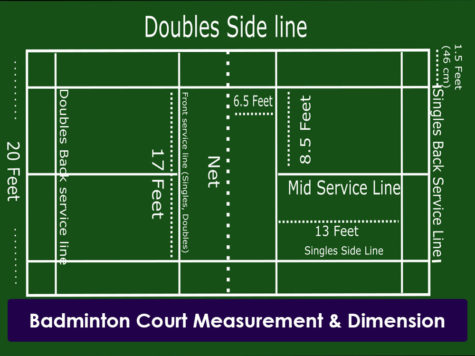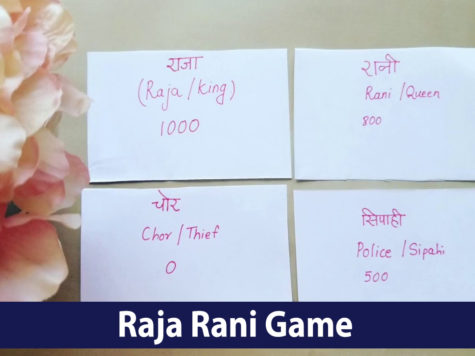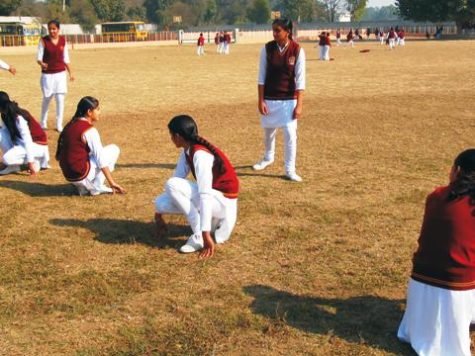Table of Contents
Kushti Game Rules & Techniques
“Kushti” or “Pehlwani” , a sport that transmits the fragrance of Indian soil is a style of mud wrestling that dates to the time when Mughal rulers held influence over this huge India.

Kushti is considerably more than a game, this conventional type of Indian wrestling offers its followers a profound journey, a consecrated space, and an unparalleled climate of social solidarity. The words Pehlwani and Kushti get from the Persian expressions Pahlavani and Kushti individually. This Indian martial Art has its parenthood from Malla-Yuddha of India and Varzesh-e Pahlavani of Persia. Kushti origin can also be found in the great epic of Mahabharat.
Also check: Geeta Phogat Biography
History and Origin of Kushti

In the era of the 16th century, when Indian soil was conquered and being stared to rule by the Mughals, who were of Turko-Mongol plunge. Through the impact of Iranian and Mongolian wrestling, they joined the foundation of the local martial arts Malla-Yuddha, in this way making a current game of Kushti. The first Mughal emperor Babur was a wrestler himself and could supposedly run quickly for a long separation while holding a man under each arm. Mughal-time wrestlers some of the time even played wearing Bagh Naka on one hand, in a variety called Naki Ka Kushti.
Ramadasa the “father of Indian athletics” in the late 17th century ventured to every part of the nation urging Hindus to physical movement in tribute to the immense Lord Hanuman. Maratha rulers bolstered Kushti by offering vast totals of prize cash for competition champions. It widely said that each Maratha kid at the time could wrestle and even ladies took up the game with full enthusiasm. During the colonial rule, nearby princes and kings maintained the prominence of Kushti by facilitating matches and rivalries. Wrestling was the most loved onlooker game of the Rajputs, they played this game with great valor. The best Kushti was said to take place in Uttar Pradesh and the Punjab areas of India.
India had acclaimed wrestlers of the class like Great Gama and Gobar Goho. India achieved its pinnacle of grandness in the 4th Asian Games held in 1962 at Jakarta when all seven wrestlers were put on the decoration list and in the middle of them they won twelve awards in free-form wrestling and Greco-Roman wrestling. A reiteration of this execution was seen again when all the 8 wrestlers sent to the Commonwealth Games held in Jamaica had the qualification of getting awards for the nation. In the 60s, India was positioned among the initial eight or nine wrestling countries of the world and facilitated the world wrestling titles in New Delhi in 1967.
Also Check: Kabaddi Tips & Techniques
Training and Diet of Kushti Pehlwans

Kushti being in excess of a game, it is a way of life that requires the thorough train of every single martial art. In spite of the fact that wrestling in South Asia saw vast changes in the Mughal era and the provincial time frame, the preparation and basic training regimen have continued as before for more than 150 years.
For extensive stretches around 6 months to a year, wrestlers in preparation commit their bodies and spirits to the act of Kushti. Living at the akhara, preparing starts with acing restraint and figuring out how to regard others. The wrestlers are bound by to a great degree requesting regimens in which some will prepare 365 days a year, even in the unbearable summers when temperatures achieve 40°
Kushti is practiced inside uniquely manufactured exercise rooms or gymnasiums, known as an Akhara, the wrestlers assemble every day. Wearing just a balanced loincloth known as Langot, wrestlers or Pehelwan enter a pit made of mud to go head to head. The material is regularly blended with salt, lemon and ghee, camphor, and turmeric. This mud, speaking to Mother Earth, is re-established every two years. Prior to each match, every Pehelwan covers the body of his enemy with this mud, whose shading differs by area red in Kolhapur and parts, yellow in Varanasi and surrounding areas. At the time of combat, the mud-covered bodies of the Pehelwan merge with the shade of the field.
Vyayam or physical preparation is intended to assemble quality and create muscle mass and adaptability. Activities that utilize the wrestler’s own particular body weight incorporate the Surya Namaskara, Shirshasana, and the danda, relation found in hatha yoga, and also the Bethak. Sawari is the act of utilizing someone else’s body weight to add resistance to such activities, to make it tougher.
Also Check: Kabaddi Rules and Regulations
Types of equipment that are used in Training
- Nal, a hollow stone cylinder with a handle inside.
- Gar-Nal, a neck weight used in danda and Bethak.
- Gada or Mace, a weapon of Lord Hanuman.
- Indian clubs, which were actually introduced by the Mughals.
Training regimes of the mighty Pehlwans
- Waking Up at 3 a.m. doing danda and Bethak around 4000. Running for 5kms, swimming and strength activities.
- Around 8 am they start there wrestling training under their teachers are known as Ustaads, for 3hrs, about 25 matches in a row.
- After the get an oil massage before resting
- At about 4 pm they start to train again preceded by an oil massage.
- Off to sleep within 8 pm
Pehlwani Diet
The vigorous training and lifestyle of Pehelwans need a high-intensity diet. Ghee, Milk, and almonds are stapled foods of wrestlers. Typical munchies for Pehlwans are chickpeas that have been grown medium-term in water and prepared with salt, pepper, and lemon; the water in which the chickpeas were grown is additionally viewed as nutritious. Their diet also includes a lot of fruits and veggies, banana being an important part. Meat is also used by some Pehlwans.
Preferably, wrestlers assumed evade acrid and too much-spiced sustenance , for example, Chatni and achar and in addition chaat. Gentle flavoring with garlic, cumin, coriander, and turmeric is satisfactory. The utilization of liquor, tobacco, and paan is firmly debilitated.
Technique and Rules of the Dangal

It has been said that the greater part of the moves found in the wrestling types of different nations is available in Kushti. These are basically bolts, tosses, pins, and accommodation holds. Not at all like its antiquated predecessor Malla-Yuddha, Kushti does not allow strikes or kicks amid a match. Among the most supported maneuvers are the dhobi paat or bear toss and the Kasauta or choke stick. Different moves incorporate the Baharli, dhak, Machli Gota, and the Multani, which are common in the match.
The lead for winning is simple, the shoulders of your rival must be stuck to the ground. Wrestling matches, known as Dangal, are held in towns and in that capacity are variable and adaptable. The field is either a round or square shape, estimating no less than fourteen feet over. Instead of utilizing present-day mats, South Asian wrestlers prepare and content on soil floors. Before preparing, the floor is raked of any rocks or stones. Buttermilk, oil, and red ochre are sprinkled to the ground, giving the soil its red shade. Regardless of the stamped limits of the field, contenders may go outside the ring amid a match with no punishment.
There are no rounds yet the length of each session is determined previously, for the most part around 30 minutes. On the off chance that the two contenders concur, the length of the match might be expanded. Match augmentations are ordinarily around 10 to15 minutes. Unlike tangle based wrestling, there is no point scoring framework, a win is accomplished by sticking the adversary’s shoulders and hips to the ground all the while, despite the fact that triumph by knockout, stoppage or accommodation is additionally conceivable. Sessions are managed by an official inside the ring and a board of two judges viewing all things considered. A Dangal commences after a vast and pompous puja offered to Lord Hanuman.
Kushti Championship & Competitions

Akhara Dangal or the true Kushti doesn’t have any official competitions or is not an Olympic sport, though it is widely practiced in parts of India traditionally. Pehlwan who contends in wrestling these days is additionally known to broadly educate in the catching parts of judo and jujutsu.
Wrestling Federation of India is the governing body of wrestling in India, which in recent times has shown a lot of success in the Olympics and other international events. India takes part as a wrestling team in Asian games, commonwealth games, wrestling world cup, etc.
Olympics achievements are:-
- Bronze by Khashaba Dadasaheb Jadhav in 1952,
- Bronze by Sushil Kumar in 2008,
- Silver by Sushil Kumar in 2012,
- Bronze by Yogeshwar Dutt in 2012,
- Bronze by Sakshi Malik in 2016.
Titles traditionally are given:-
- Rustam-e-Hind won by Dara Singh the champion of India
- Maharashtra Kesari
- Rustam-e-Panjaab
- Rustam-e-Zamana won by Great Gama the world champion.
- Bharat-Kesari
- Hind Kesari
Also Check: Roman Reigns Wallpapers
Current Scenario and Media

Today, the act of Kushti is in a decrease in India as young people are drawn far from customary practices to worldwide games like Football and Cricket. Kolhapur and Varanasi are a portion of a couple of urban communities where the game stays famous and where amid the season, rivalries are much of the time sorted out.
Bharatiya Kushti Patrika edited by Ratan Patodi, started its journey in 1962, covers the sport of Kushti. The main goal of it is to preserve the Kushti culture through its publication.
Amir Khan starred in Dangal, and 2017 also led to a vast impact of the Kushti culture of India, showcasing the biography of the Phogat family. Media coverings are also demining day by day.
Also Check: International Kabaddi Rankings



